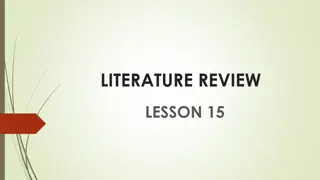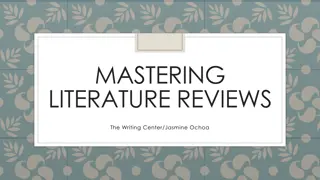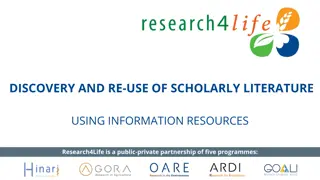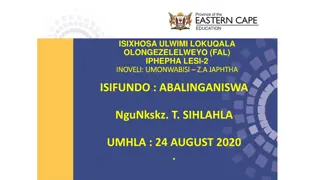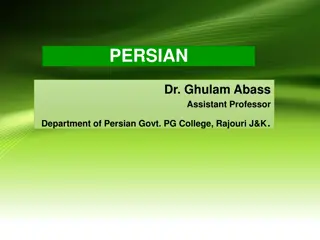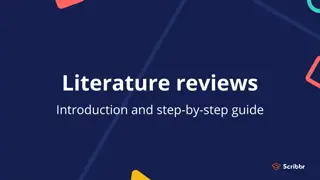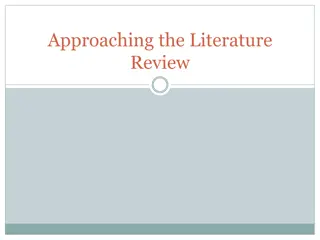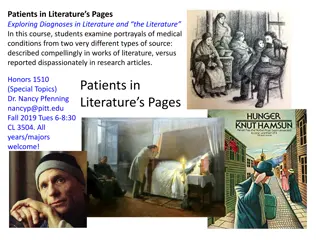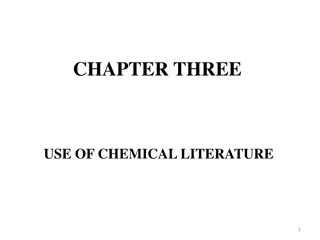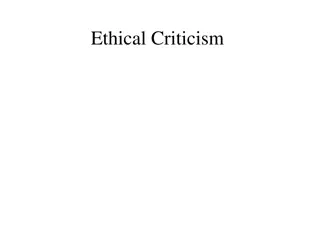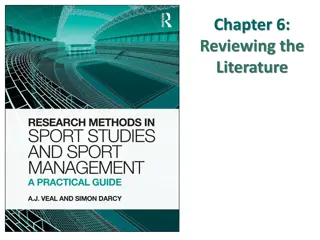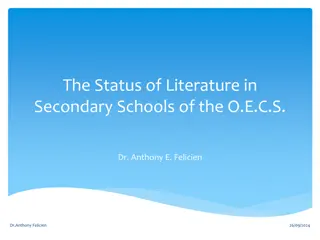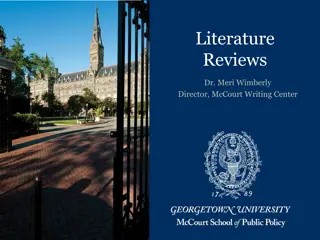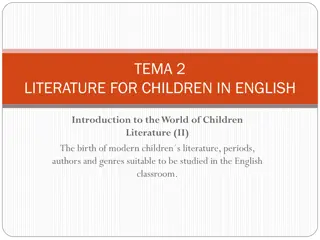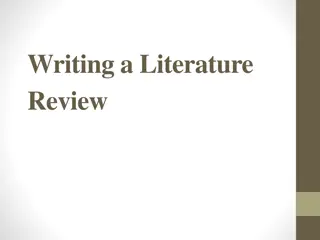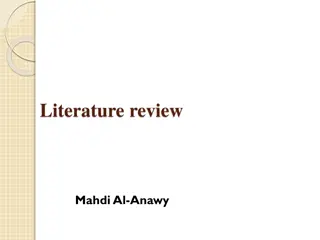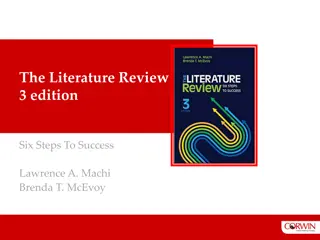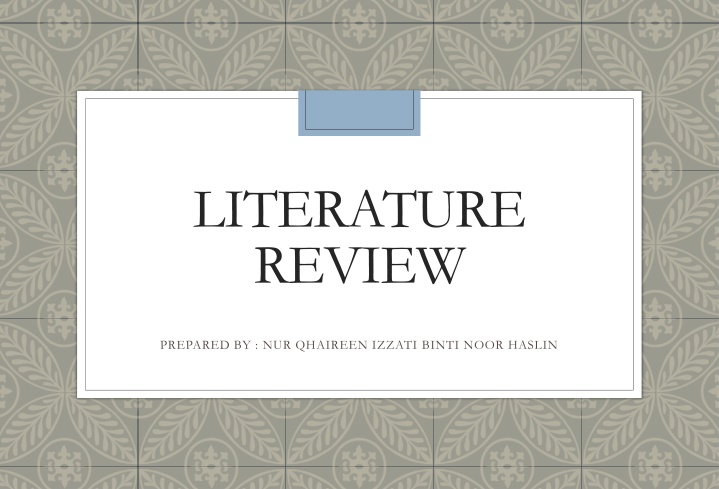
Literature Review: Purpose, Structure, and Guidelines
Discover the essence of literature review - an overview of scholarly works in a specific field, including journal articles, books, essays, and more. Learn the purpose, structure, and guidelines for conducting a critical analysis to relate findings to previous research and suggest further studies.
Download Presentation

Please find below an Image/Link to download the presentation.
The content on the website is provided AS IS for your information and personal use only. It may not be sold, licensed, or shared on other websites without obtaining consent from the author. If you encounter any issues during the download, it is possible that the publisher has removed the file from their server.
You are allowed to download the files provided on this website for personal or commercial use, subject to the condition that they are used lawfully. All files are the property of their respective owners.
The content on the website is provided AS IS for your information and personal use only. It may not be sold, licensed, or shared on other websites without obtaining consent from the author.
E N D
Presentation Transcript
LITERATURE REVIEW PREPARED BY : NUR QHAIREEN IZZATI BINTI NOOR HASLIN
What is Literature Review ? Purpose Structure Guidelines Rules & Tips
What is Literature Review ? "Review" : an overview summarizing major parts and bringing them together to build a picture of what's out there. Different fields of study (and different professors) will have different standards on whether a review is supposed to be more of a straightforward summary or if it is supposed to have a deep analysis and discussion.
"The Literature" : means the major writings - especially scholarly writings on the topic. Depending on your field "the literature can include all sorts of things: journal articles, books, published essays, government reports, and so on. The main thing is that "the literature" is the body of scholarly, professional information that is used by professionals and scholars working on that topic area
CONCLUSION : CONCLUSION : an account of what has been published on a topic by accredited scholars and researchers. It focuses on a specific Literature review includes a critical analysis of the relationship among different works, and relating this research to your work. specific topic of interest to you critical analysis
To relate the findings to previous research & suggest further research To relate the findings to previous research & suggest further research Describe the relationship of each work to others. Describe the relationship of each work to others. Resolve conflicts amongst seemingly contradictory previous studies. Resolve conflicts amongst seemingly contradictory previous studies. To define & limit the problem you are working on. To define & limit the problem you are working on. Purpose
Structure The overall structure : depend on the research area What should do : Compare & contrast the varying opinions of different writters Do not : Describe what one writer says, and then go on to give a general overview of another writer, and then another, and so on.
Use linking words for each section to discuss what the different literature argues & link to the main purpose . Similar opinions Similarly , In addition , also , again Disagreement However , On the other hand , Conversely , Nevertheless At the end of the review you should include a summary of what the literature implies, which again links to your hypothesis or main question
Guidelines Step 1 : Review APA Guidelines Step 2 : Decide On A Topic Step 3 : Identify the Literature to be Review Step 4 : Analyze the Literature Step 5 : Summarize the Literature Step 6 : Synthesize the Literature Step 7 : Writing the Review Step 8 : Developing a Coherent Essay Galvan, J. (2006). Writing literature reviews: a guide for students of the behavioral sciences ( 3rd ed.).Glendale, CA: Pyrczak Publishing
Rules & Tips Define a Topic & Audience Search & Research the Literature Take Notes While Reading Choose the Type of Review You Wish To Write Keep the Review Focused, but Make it of Broad Interest
Be Critical & Consistent Find a Logical Structure Make Use of Feedback Include Your Own Relevant Research, but Be Objective Be Up-To-Date, but Do Not Forget Older Studies Pautasso M (2013) Ten Simple Rules for Writing a Literature Review, PLoS Comput Biol. 2013 Jul; 9(7): e1003149 , doi: 10.1371/journal.pcbi.1003149
Thank You Any question ?


